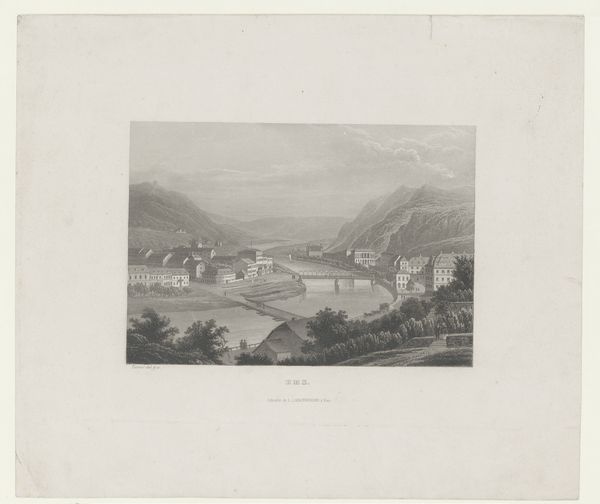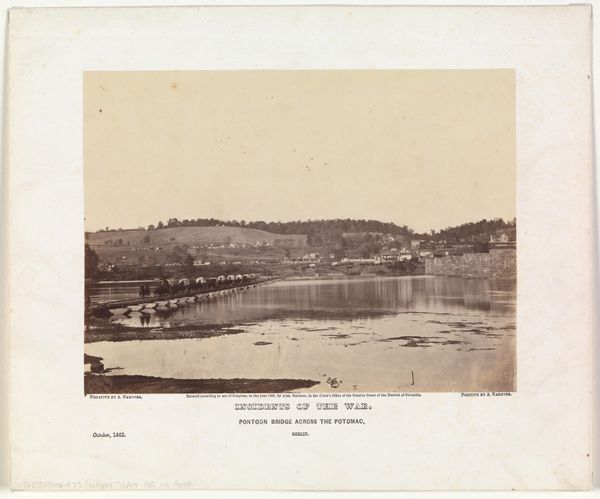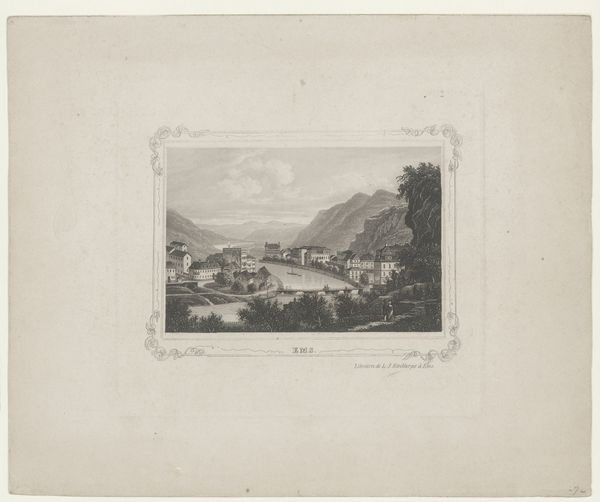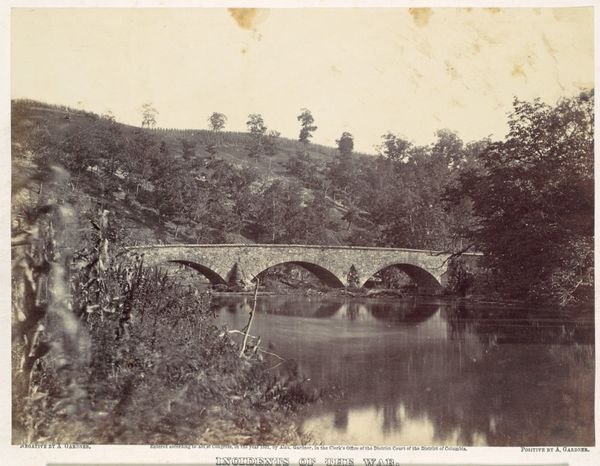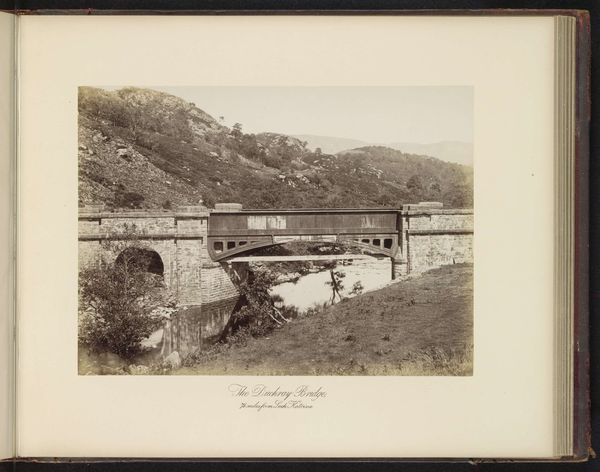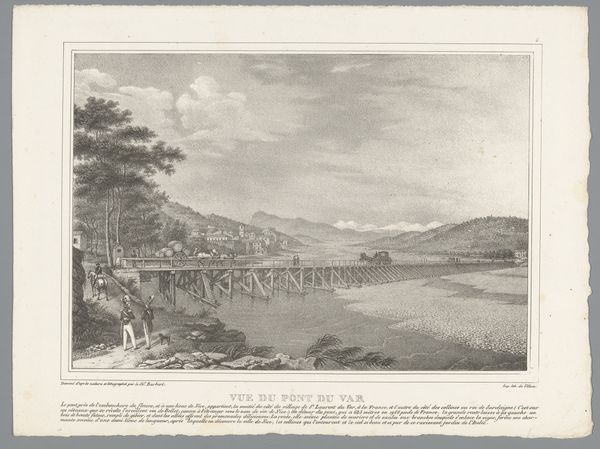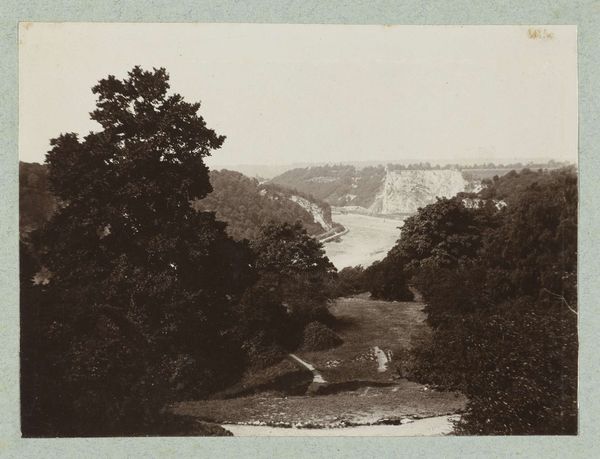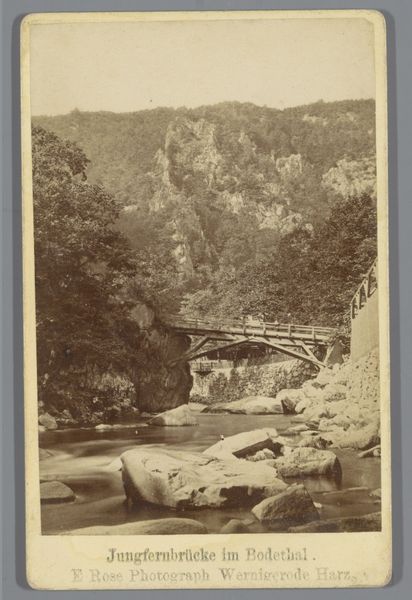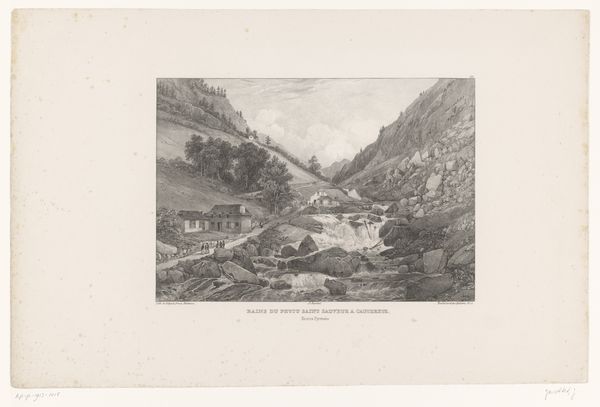
#
pencil drawn
#
photo of handprinted image
#
aged paper
#
light pencil work
#
photo restoration
#
ink paper printed
#
pencil sketch
#
light coloured
#
waterfall
#
white palette
#
watercolor
Dimensions: height 400 mm, width 566 mm
Copyright: Rijks Museum: Open Domain
Curator: Eugène Cicéri's "Landschap met Rheinfall bij Schaffhausen" from 1859… What leaps out at you? Editor: Well, there's a quiet power here, isn't there? That waterfall dominating the scene, almost a veil separating the foreground from the distant hills. It has this almost photographic clarity, like a captured memory. Curator: A veil indeed! Waterfalls have always represented transformation, haven't they? A point of no return, a letting go. The Rhine Falls here, rendered so meticulously, act almost like a gateway. Notice how the architecture—the houses clustered by the river and the bridge gracefully arching over it—seems dwarfed by the natural spectacle. It emphasizes nature’s dominion. Editor: It does make you think about the romantic fascination with nature at that time, the sublime. But it's more than just that. The detailed rendering almost turns it into a kind of documentary, but softened by the paper and aged tones. The way Cicéri uses pencil work creates a luminous effect, despite the somber color. It has a wistful air, maybe even melancholic? Curator: The light colored wash is very deliberate and definitely heightens the emotion. You see the echoes of Dutch landscape painting here—the level horizon, the attention to topographical accuracy… yet it is so deeply, romantically Swiss at its core, capturing a certain quality of stillness. And this very stillness contrasts wonderfully with the dynamism of the waters. Do you notice any specific symbolic elements or recurring images? Editor: The bridge. It's not just functional; it's a symbol of connection, linking opposing banks, suggesting a passage between different realms—the mundane and the wild, perhaps. Even more interesting, the bridge and the houses look very permanent, solid while the water and waterfall are not so grounded as temporal images. This highlights change, and perhaps fleeting existence itself. Curator: Absolutely! And maybe there's a yearning in Cicéri himself reflected here? Trapped in the temporal, and searching the bridge toward connection with the eternal? Editor: I think so, I'd never considered the image with all these meanings before our chat, but I see it now. It is what the image brings forth within us as well as a picture from a distant world! Curator: It's beautiful to let a work of art speak back to us in that way, and for art to reveal our very selves, through our shared connection with these timeless archetypes.
Comments
No comments
Be the first to comment and join the conversation on the ultimate creative platform.


